Edinburgh, the capital of Scotland, is a city where modern and historical influences merge side by side in unison. It is a place buzzing with energy hosting many international events such as The Fringe, The International Book festival, The Royal Military Tattoo, International Storytelling Festival as well as the famous Edinburgh Hogmanay.
If your time in the city is limited include an open-topped bus tour on your itinerary as that is the best way to orientate one’s self with the main places to visit. Take the time to do one complete tour in the bus, marking down the places that might be of interest to you. Take time out to enjoy a refreshing drink in the beautiful Princes Street Gardens then board the bus again, alighting at each place you wish to explore further.
For those with more time to spend experiencing the history of this great city, start at the spectacular Castle that overlooks the famous Princess Street and its Gardens. The castle is built on top of Castle Rock, formed after a volcanic eruption over 350 million years ago. Over the years it has been used as a royal residence and military base and for much of its early life was constantly under siege. Take the time to visit the National War Museum situated in the castle grounds as well as the tiny chapel dedicated to Saint Margaret. Be sure to visit the ramparts at one o’clock where each day the ‘one o’clock gun’ is fired. Look down on the city where, as if in slow motion, you will see the people below stop to check their watches before quickly rushing on about their business.
Leave the Castle ramparts and on the left hand side of the street you will find a white washed tower where the Camera Obscura is housed. Like a hall of mirrors, the illusions you will see enable you to view a fascinating 360degree vision of the moving city below. Described as part pinhole camera and part periscope, the Camera Obscura was the first time Victorians had seen moving images and you can view the same scenes today.
Continue your journey down the Royal Mile and on your right hand side you will see St. Giles’ Cathedral. Before entering the west door of the Cathedral, stop for a minute to view the heart shaped mosaic built into the pavement and known as the ‘Heart of Midlothian’. The heart marks the doorway to an old prison where executions used to take place. The historic Cathedral was built in the 12th Century and is home to the Chapel of the Order of the Thistle that was completed in 1911. This chapel contains stalls for the 16 knights of the Order of the Thistle, the Sovereign’s stall and two Royal stalls and is famous for its stunning wood carvings and unique depiction of angels playing bagpipes. There is much to see in this beautiful building including a statue of the famous reformation preacher, John Knox; exquisite stained glass windows; the Eagle Lectern; the King’s Pillar and the National Covenant of Scotland.
Moving further down the street you will come to the Museum of Childhood, where the whole family can spend time exploring the toys and games that brought fun and laughter to children through the ages. Adults can reminisce about toys they used in their youth while today’s children can stare in wonder at things they consider old fashioned. As well as viewing items in glass cases there are hands on activities to participate in such as the puppet theatre and an area for dressing up.
Continue your journey to the old Canongate Tolbooth building where The People’s Story is now housed. Before becoming a museum the building was used as a courtroom and prison, a police office, a fire-station a library and a literary institute. Today, the tollbooth building and next door tenement house a free museum that tells the story of ordinary, 18th Century working class families and the poverty they endured. View the displays that include personal stories, original objects, oral and written historical references as well as collections of artifacts from various communities.
At the end of the Royal Mile you will find The Palace of Holyrood, the Queen’s official Scottish residence. Holyrood was founded as an abbey in 1128 and was considered to be a much more comfortable accommodation than the castle. Over the years it has endured damage and restoration from various fires. The Palace is well known for its links to Mary Queen of Scots and Bonnie Prince Charlie. Today, the apartments are used when the royal family are attending State Ceremonies or for entertaining.
Adjacent to the Palace can be found the seat of political power in Scotland, the iconic Scottish Parliament building. The construction of this unique building was controversial from the start due to factors such as the location as well as the design and the architect. In the end, the design by the Spanish architect Enric Miralles said to depict the union of Scottish landscape, its people and its culture, was awarded the contract. Like all big ventures, the building did not open on schedule but was three years late at an estimated cost of £414 million, much greater than was originally anticipated.
At the end of your journey, I am sure you will be left with many lasting memories of how this great city combines its modern appeal whilst still retaining the glory of its historical past.

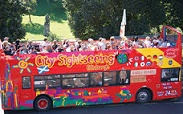
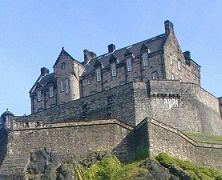

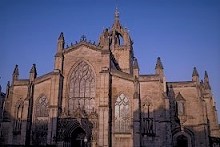
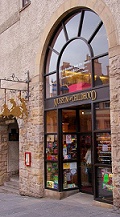
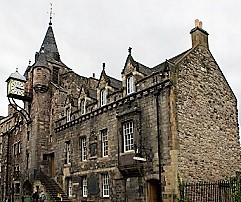
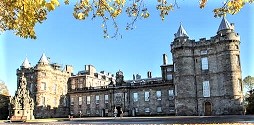
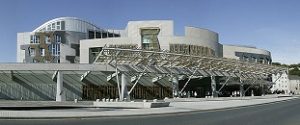

My friend and I will be visiting Edinburgh for the Fringe Festival and will use your guide to help us make the best of our visit to the Royal Mile.
What a wonderful city full of history and amazing architecture. Your blog captures it all.
I am looking forward to the excitement of all the events and people wandering down the Royal Mile during the Fringe. Edinburgh certainly comes alive then.
As an American in Scotland I have just seen all the places on your blog and my family loved them. It was something to look out for as we made our way down the street from the castle to Holyrood Palace. Thanks for the help.